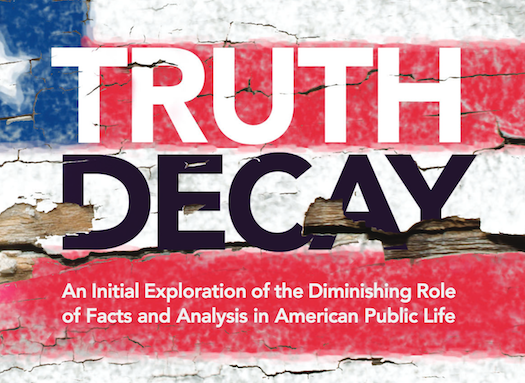At the start of each new year there are a range of studies and reports looking at media and journalism the past year and in the coming 12 months.
AsiaRadioToday has taken a look at four of the latest studies and summarises them for you.
The gift that keeps on giving – Holiday season radio listening.
A regular Nielsen study of US radio listening during the Thanksgiving to Christmas holiday season found that the Adult Contemporary format benefitted most from holiday listening, with Christmas themed formats scoring well for those stations.
The AC format set a new all-time high for audience share in during the holiday season.
AC stations are more likely to flip to the “all-Christmas” music format at the end of the year than other formats, and this year AC reaped the rewards big-time.
Across Nielsen’s PPM markets the AC format set an all-time record for highest audience share (among all listeners 6+) in both the December survey (10.5% in 2017) and the Holiday survey (13.9% in 2017). In both months, AC was the top-ranked format, jumping ahead of News/Talk, which generally ranks No. 1 in 6+ audience share during the rest of the year.
More details here
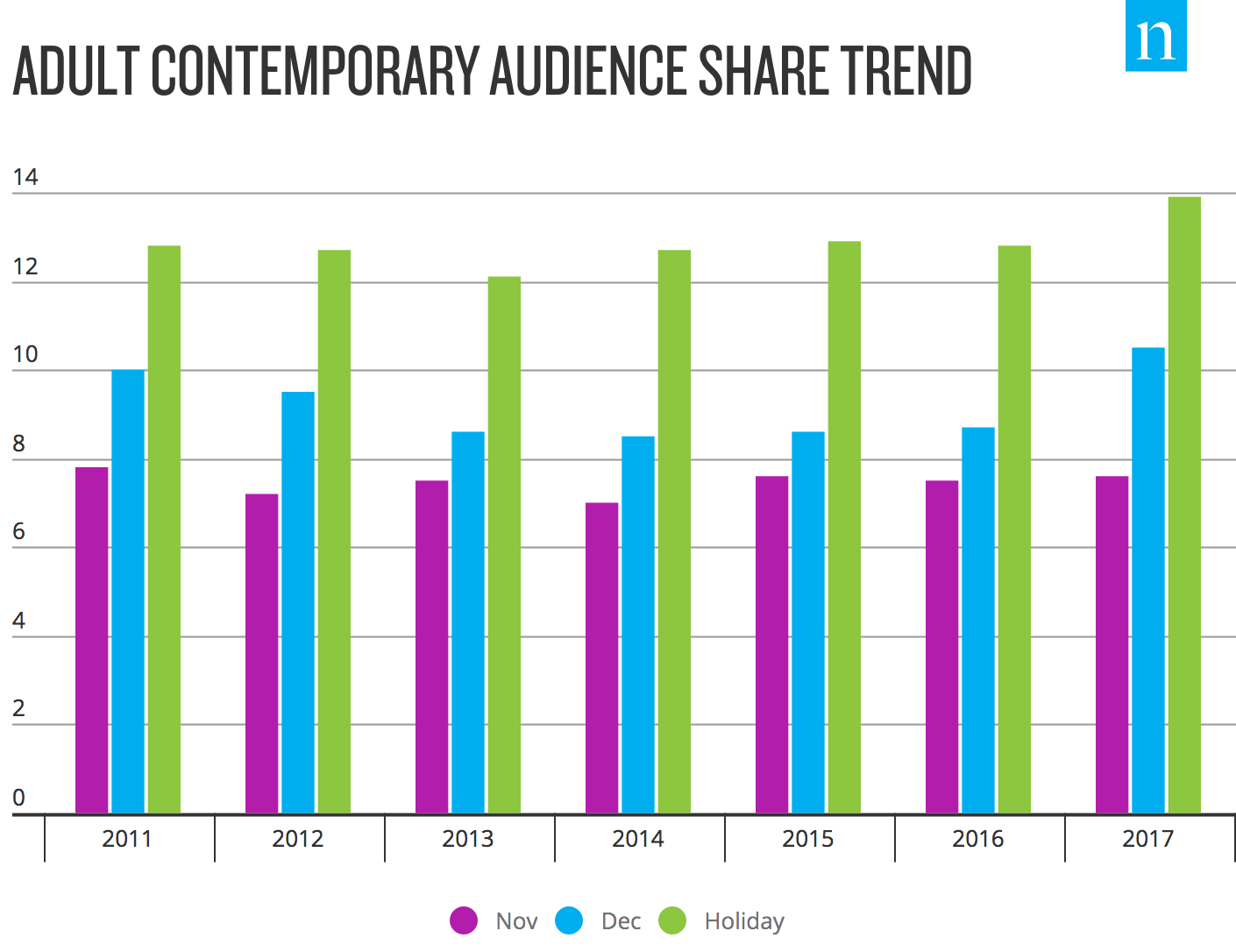
Don’t trust anyone!
The 2018 Edelman Trust Barometer reveals a world of seemingly stagnant distrust.
People’s trust in business, government, NGOs and media remained largely unchanged from 2017. Twenty of 28 markets surveyed now lie in distruster territory, up one from last year. Dramatic shifts are taking place at the country level and within the institution of media.
The world is moving apart in trust. The United States saw a steep decline in trust, with a 37-point aggregate drop in trust across all institutions. At the opposite end of the spectrum, China experienced a 27-point gain, more than any other country.
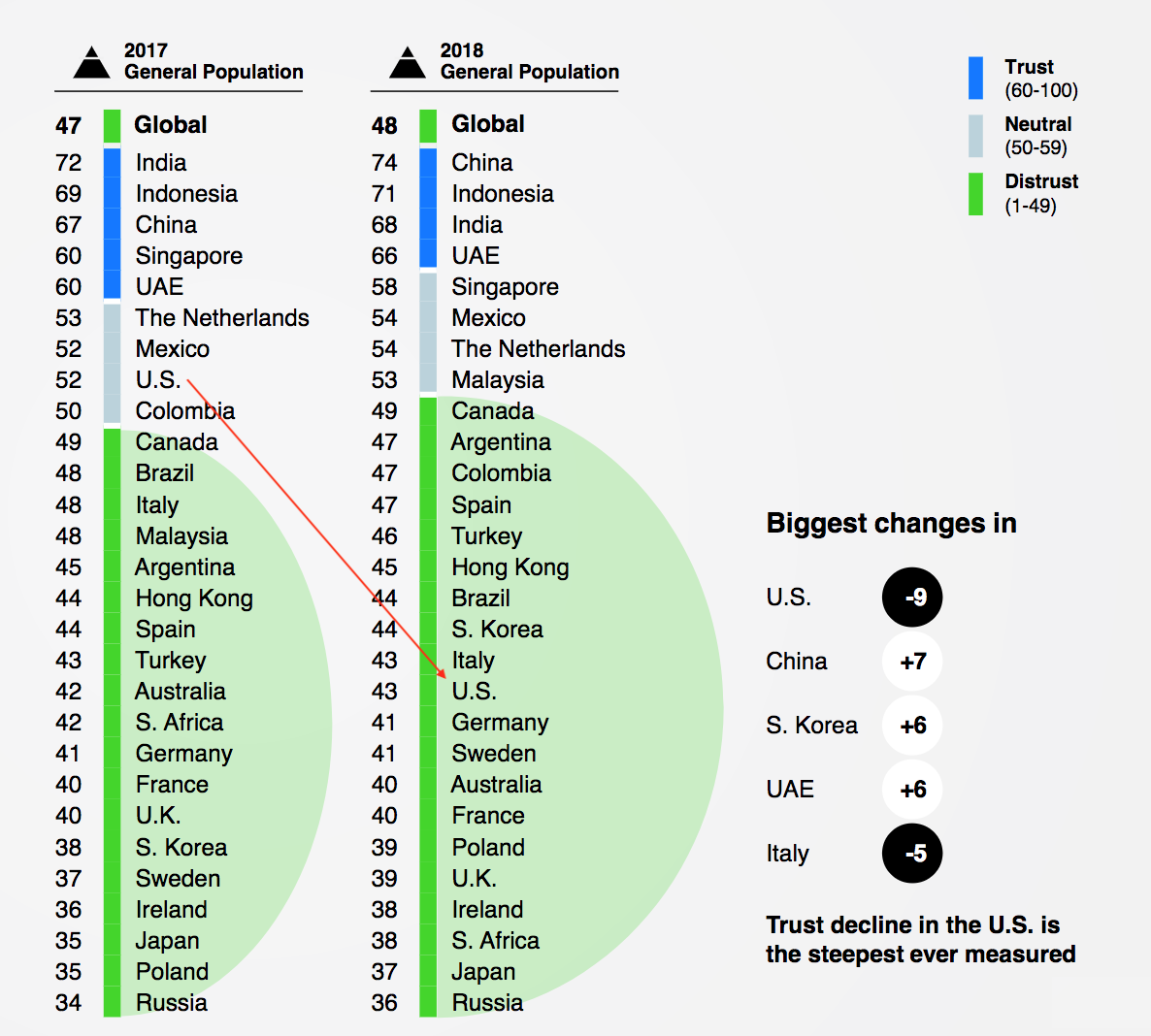
Globally, 70% of people worry about fake news or false information being used as a weapon, and 59% say that it is getting harder to tell if a piece of news was produced by a respected media organization.
In this environment, media has become the least-trusted institution for the first time in Trust Barometer history — yet, at the same time, the credibility of journalists rose substantially. A number of factors are driving this paradox.
Confusion about the credibility of news is connected to the broad, wide definition of media that Trust Barometer respondents now hold. Some people consider platforms to be part of “the media” — including social media (48 percent) and search engines (25 percent) — alongside journalism (89 percent), which includes publishers and news organizations.
This year, trust in journalism jumped five points while trust in platforms dipped two points.
Most likely, the falloff of trust in social and search, and of the credibility of peer communication, are contributing to the overall decline of trust in media.
At the same time, voices of expertise are now regaining credibility. Journalists have risen 12 points, and CEOs recorded a seven-percentage point gain, since 2017. Technical experts, financial industry analysts, and successful entrepreneurs now register credibility levels of 50 percent or higher.
Download the Global Trust Barometer Report here

A critical year for technology companies and the journalism industry
The Reuters Foundation has published research conducted by Nic Newman that looks back at media trends last year and used them to predict forward for 2018.
Platforms such as Facebook, Google, Titter and YouTube will be increasingly wary of the reputational damage that often comes with news, while many publishers will be trying to break their dependence on platforms.
2018 will also see a renewed focus on data – as the ability to collect, process, and use it effectively proves a key differentiator for publishers.
Media companies will be actively moving customers from ‘the anonymous to the known’ so they can develop more loyal relationships and prepare for an era of more personalised services.
In the Reuters survey of 194 Leading Editors, CEOs, and Digital Leaders, these were the key points:
- Almost half of publishers (44%) say they are more worried about the power and influence of platforms than this time last year. Only 7% are less worried. Publishers feel more negatively towards Facebook and Snapchat than they do about Twitter and Google.
- Despite this, publishers also blame themselves for their ongoing difficulties. The biggest barriers to success, they say, are not tech platforms but internal factors (36%) such as resistance to change and inability to innovate.
- Almost half of publishers (44%) see subscriptions as a very important source of digital revenue in 2018 – more than digital display advertising (38%) and branded and sponsored content (39%).
- Expect more audio in 2018: 58% of publishers say they’ll be focusing on podcasts, with the same proportion looking at content for voice activated-speakers.
- Almost three-quarters (72%) are planning to actively experiment with artificial intelligence (AI) to support better content recommendations and to drive greater production efficiency (e.g. ‘robo-journalism’).
See the full report here
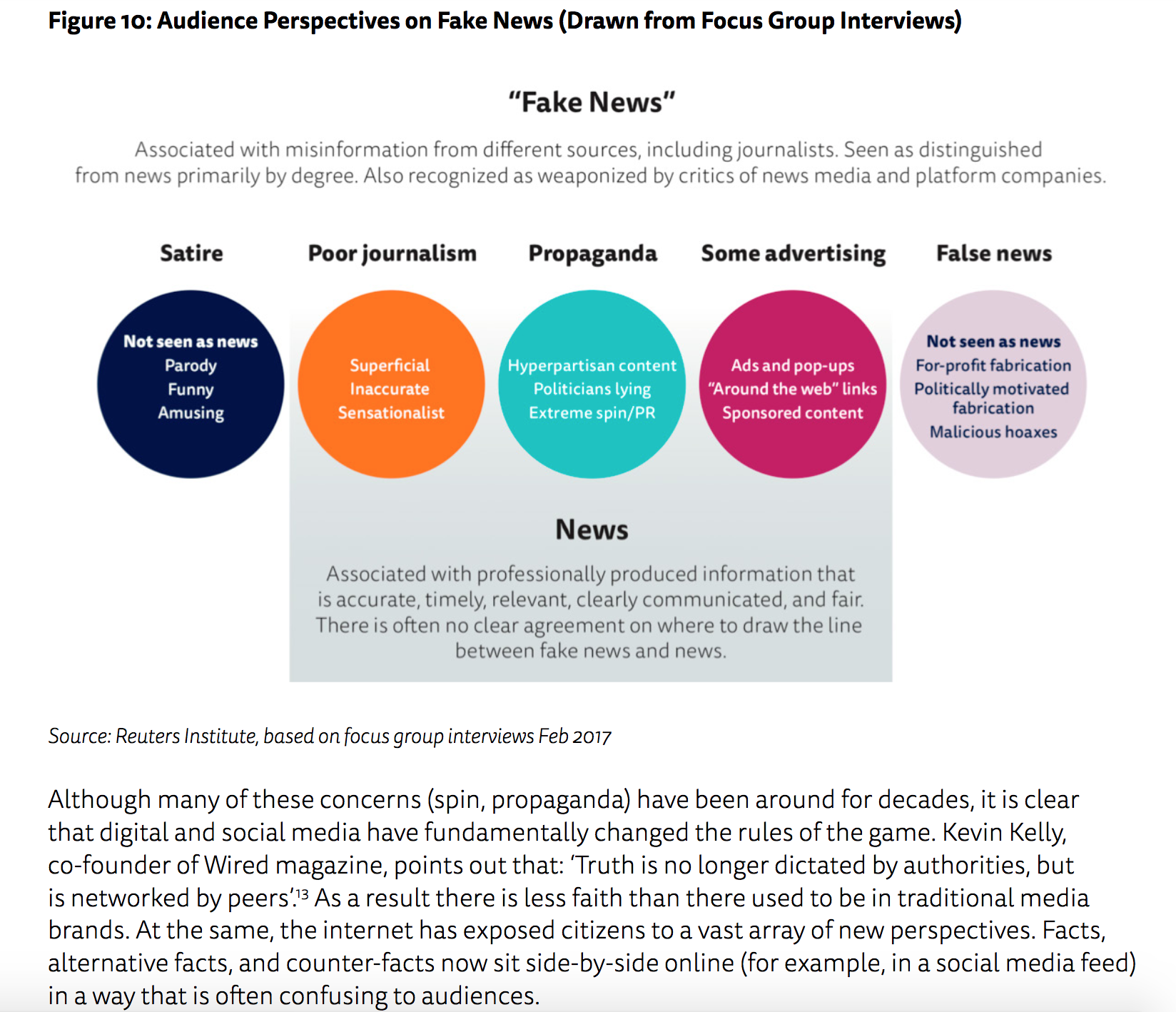
Truth Decay.
In a new report published by the Rand Corporation, Jennifer Kavanagh and Michael D. Rich argue that in the past two decades, national political and civil discourse in the United States has been characterized by “Truth Decay.”
It is defined as a set of four interrelated trends:
- an increasing disagreement about facts and analytical interpretations of facts and data
- a blurring of the line between opinion and fact
- an increase in the relative volume, and resulting influence, of opinion and personal experience over fact
- lowered trust in formerly respected sources of factual information
These trends have many causes, but this report focuses on four: characteristics of human cognitive processing, such as cognitive bias; changes in the information system, including social media and the 24-hour news cycle; competing demands on the education system that diminish time spent on media literacy and critical thinking; and polarization, both political and demographic.
The most damaging consequences of Truth Decay include the erosion of civil discourse, political paralysis, alienation and disengagement of individuals from political and civic institutions, and uncertainty over national policy.
Get the full report here
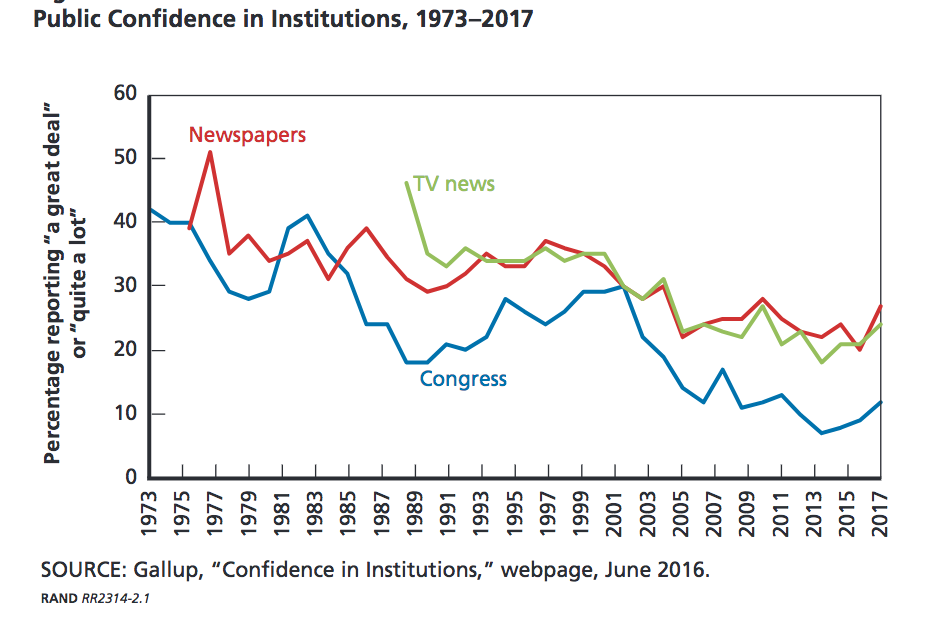
The future of the smartphone
A Deloitte annual study predicts further growth in smartphone usage, and the introduction of more machine learning features and Artificial Intelligence functions in our many digital devices.
Deloitte Global predicts that by the end of 2023, penetration of smartphones among adults in developed countries will surpass 90 percent, a five-percentage-point increase over 2018. Smartphone sales will be 1.85 billion per year in 2023, a 19 percent increase over 2018 and equivalent to over five million units per day.
The main driver of higher adoption rates in each market will be take-up among older age groups. We would expect ownership among 55-to-75-year-olds to reach 85 percent in developed countries in 2023, a 10-percentage-point increase over 2018.
The study predicts that owners will interact with their phones on average 65 times per day in 2023, a 20 percent increase over 2018.14 This will re ect the wider range of applications used by the mainstream smartphone owner, such as enterprise applications and in-store payment options, and more intensive use of existing applications such as photography.
Deloitte expects the percentage of smartphone owners who use their devices daily to increase from 93 percent in 2018 to 96 percent by 2023.15 This implies that 86 percent of all adults will use a smartphone on any given day in 2023, versus 79 percent in 2018.
This usage frequency is likely to be signicantly higher than for any other digital device, and it is likely to drive upgrades and, ultimately, total sales and the rising value of those sales. The frequency of smartphone usage is likely also to spur an ever-greater degree of smartphone-centric content creation and process redesign.
Download the full study here.

